Table of Contents
Connecting the familiar and possible is how people learn. Content marketers typically approach the process of coming up with new ideas and initiatives by referring, evaluating, and continuously improving on the creative experiences they have had in the past — in other words, by resting on the shoulders of giants.
Determining the core of what makes certain campaigns stand out over the others is no easy task, as you might imagine. Neither is figuring out how to put those fundamental insights to use in pursuit of our own company objectives, audience requirements, and market possibilities.
We’ve already done some of the legwork for you to make your brand strategy journey a little easier.
Get Inspired: These examples that are advancing content marketing show how prominent B2B and B2C companies have lifted the marketing standard with outstanding content initiatives.
We sincerely hope you’ll like this guide’s examples as much as we did writing them. An example of my favorites, coupled with lessons learned from their success can be found here.
What Constitutes a Good Content Marketing Example?
We had to set certain standards for what we thought great in order to compile this list. There must be a harmony between aesthetics and practicality. To be effective, it must provide the value of some type and be well-designed.
The subject should be of interest and importance to the listeners or viewers. It should be easy to read and approach the subject from a fresh perspective, providing readers with new insights and perspectives. It also shouldn’t be only about you or your company’s brand. Actually, it’s preferable if the brand name isn’t even mentioned. This is a great example of thought leadership in its purest form.
The industries and formats shown in the following samples are all diverse. Content marketing encompasses a wide range of mediums, from ebooks to applications to videos. Because they all share special credit, the examples are listed alphabetically rather than numerically.
Here’s how I’ll explain it:
- Put someone in charge of defining and executing your content marketing strategy.
- Post material that your target audience wants to see.
- Regularly release new content
- Publish articles written by a number of different authors.
- Consider if your marketing strategy will be somewhat branded and “on domain” (the same as your company’s url) or off domain Cover a diverse range of subjects in which you are an authority.
- Make the most of your time and energy spent on acquiring new subscribers.
- Examine your Content Marketing ROI in terms of how well you can reach, engage, and convert new audiences while spending as little as possible, and make changes to your content marketing standards as necessary.
- Some of the most effective content marketing strategies incorporate both function and aesthetics. Both Headspace and Innocent have built stunning UIs without compromising on the quality of the information they offer.
Producing these kinds of content hubs may appear time-consuming, but it isn’t. To be an effective content marketer, you must consistently produce material like articles, videos, blog posts, etc. If you are already doing this, you are almost halfway there.
Here are some great examples of content marketing so that you may be motivated and understand that you too can become a great example of content marketing.
Content Marketing Campaigns Case Studies
Superdrug

The Strategy:
“PERCEPTIONS OF PERFECTION” was the campaign’s name at Superdrug. Women graphic designers from 18 nations across the world received a picture of a woman as part of a campaign plan. Superdrug commissioned them to use photoshop to make the image more visually appealing to people in their nation. Superdrug requested them to… Later, Superdrug built a visual asset that combined the many renditions of the original picture generated by graphic artists from 18 different nations across the world.
The Results:
- A total of 600 media, notably Buzzfeed, Huffpost, CNN, and the New York Times, took up the ad once it went viral.
- There have been almost 1,000,000 social media shares.
- Superdrug’s website received more than 1.5 million page clicks in a single day.
- Over a 16-month period, organic search traffic grew by 238%.
- Musicians like Jennifer Lopez and Lil Wayne have made mention of it.
Key Takeaway:
- One of the finest methods to connect with your consumers and promote participation is to provide emotionally attractive material.
- Customers get the impression that you understand and empathize with their changing perspectives.
- This makes your business stand out since it acknowledges the difficulties that clients experience and contributes to the development of stronger connections.
Capgemini
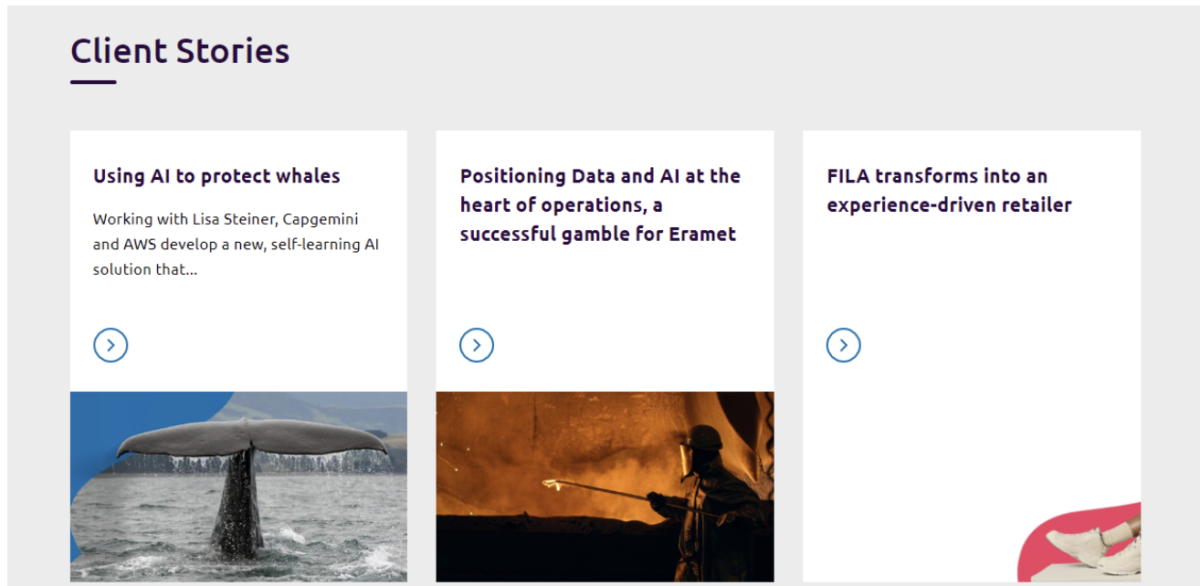
The Strategy:
The company devised a content marketing approach centered on customer interaction. For themes like cloud computing, artificial intelligence (AI), big data, etc., they turned website information into a storytelling style to enlighten and answer queries from the target audience. They recognized the problems businesses were having and offered answers in the form of content on their website. In order to educate their target audiences on the importance of technology-driven solutions, they developed a website full of articles, blogs, and informational pieces.
The Results:
- Capgemini reached its target of generating 1 million new users in only one year.
- Their LinkedIn page gained 100,000 new followers as a result of my efforts.
- There have been 1.8 million people who have seen this.
- In its second year, the approach generated sales of roughly $1 million and $5 million. And it’s now bringing in around $20 million in revenue annually.
Key Takeaway:
- To keep your consumers interested in new technology and developments, focus on information and problem-solving.
- Large-budget commercials may be ineffective if their intended consumers do not know enough about the product or company they are advertising.
- Using crowdsourcing platforms, tech companies, as well as service providers, may quickly produce and publish educational content such as blogs and articles, as well as share customer tales and how-to videos. Reliable information has the effect of increasing involvement.
Mercedes Benz
The Strategy:
Mercedes Benz aimed to appeal to a younger demographic with their marketing efforts. Their approach was to leverage user-generated content to get people involved with the business instead of paid advertising.
Five Instagram photographers were requested to participate in the “Take the Wheel” competition by Mercedes-Benz, in which they were tasked with taking pictures of the brand new Mercedes CLA. The finest aspect of the promotion was that the automobile was given away to the person with the most Facebook likes. The 5 of them worked hard, and as a result of the campaign’s global acclaim, Mercedes created some amazing graphic assets for its social media profile.
The Results:
- 87,000,000 real-time organic Instagram views
- 150 brand-new marketing resources get 2,000,000 Instagram likes (stunning photos)
Key Takeaway:
- To reach your intended audience, you must choose the proper sort of medium and social media influencers.
- Promote and produce as much material as possible from your competitions.
- Descriptive and analytical marketing assets generated by your brand can help you attract and hold on to customers.
Colgate Palmolive
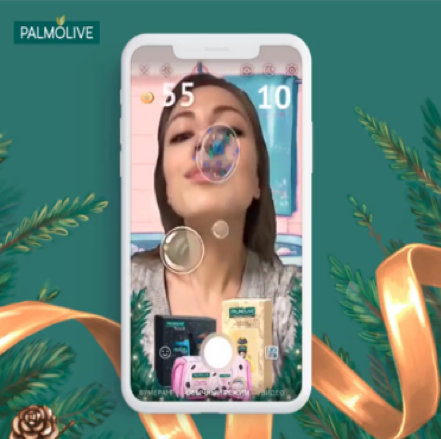
The Strategy:
One of Colgate’s Christmas advertisements promoted the sale of Palmolive gift sets by using an interactive content strategy. Using Augmented Reality and gamified content, Colgate created a pop-the-bubbles experience for its consumers. Users had to show proof of purchase before they could access the game, which took them to a landing page. In order to complete the activity, the player must use his or her nose to burst the bubble in a bath-like scene.
The Results:
- Within a fortnight of announcing the event on Facebook, over a million people had signed up.
- More than 10,000 customers visited the retailer’s website to make purchases.
Key Takeaway:
- In a congested market, creative content marketing gives your business an edge. Try one of the numerous interactive content marketing forms accessible today, such as games, AR and VR apps, quizzes, and more.
- The company Think with Google asserts that “people now have 2X more engagements with companies on mobile than anyplace else”
- The statement explains why mobile-friendly content marketing techniques are becoming more important.
SEMrush

The Strategy:
SEMrush created an educational game for its target audience to learn about the latest SEMrush toolkit capabilities. Gamer had to complete a series of tasks within SEMrush’s tool in order to locate 15 easter eggs in the game called “SEMrush Easter Egg Hunt Game”. Later on, people used Twitter to brag about their successes.
The Results:
- More than 9,300 people showed up to take part.
- 8 million Twitter engagements were generated.
Key Takeaway:
- Achieving sophisticated features in your goods is straightforward; teaching the people who will use them is more difficult. In other words, developing an educational content marketing strategy is an unavoidable necessity.
- Consider using gamified material to educate customers about your business. It aids in the successful transmission of brand messaging, draws in more customers’ attention, and educates them about your products and services.
Swiggy

The Strategy:
Swiggy Starhunt, Swiggy’s program to recognize the efforts of its delivery partners. The campaign used Tiktok to give its delivery partners a break from their normal duties and let them show off their skills. While it’s been outlawed in India, the market is flooded with applications that can take its place.)
Four teaser films were released by Swiggy to entice clients, and they received a significant amount of attention.
Dance, vocals, musical instruments, and drama were all part of the Star Hunt Challenge. Prizes and vacation packages were promised to the winners.
Swiggy promoted the challenge to a pan-India audience by using 11 different vernacular languages. As well as working with Tiktok personalities to expand the challenge’s audience.
The Results:
- Swiggy’s organic reach grew to 57 lakhs thanks to Tik Tok influencers.
- The competition drew in almost 350 service providers.
- Tiktok received almost 1500 video uploads.
- Tik Tok #SwiggyStarHunt has received 44 million views.
Key Takeaway:
- Making videos is a lot of fun, and it’s a great way to convey tales about your company and your products.
- By 2021, Cisco predicts that video will account for more than 80% of all Web traffic, indicating that businesses must have a video content strategy in place. (Cisco)
- In addition, 87% of customers want businesses to produce more videos in the future. (Hubspot). Increasing video channels like Insta reels, You Tube Shorts, and Vimeo may be quite effective for brands.
MIVI
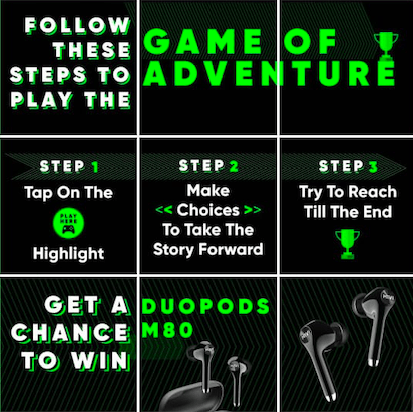
The Strategy:
MIVI launched a narrative game on Instagram that makes excellent use of the service. The goal of the game was to deliver all of the MIVI Duopods to the safe room before time ran out. The game was based on an Instagram story, and to go to the safe house, players had to choose the correct choice by tapping on it. You can enter to win one of two MIVI Duopods M80 after finishing the task.
For example, MIVI reached out to Bhuvan Bam, Mostlysane, and Carry Minati via social media. They promoted the competition on their personal social media accounts, encouraging followers to join them in their quest.
The Results:
- In only one day, over 3 lakh individuals took part in the game.
- The post received a ton of shares on social media.
Key Takeaway:
- Today, brand engagement is fueled by interactive content. Create content tactics that engage your users and keep them coming back for more.
- Instead of passively reading, watching, or listening to advertising, consumers may actively participate with interactive content.
- Additionally, it improves the customer’s overall satisfaction. Customers are more likely to convert when they have a positive experience.
Airbnb

The Strategy:
A Neighborhood guide for visitors was created as part of the content development plan in order to assist passengers in deciding where to stay, what adventures to seek, and what attractions to see in their local area while they were there. It was posted on their website and app, which is still updated periodically by their registered hosts, that the Neighbourhood guidebook was created. The book offers suggestions on where to eat, stay, and see in the area. A comprehensive handbook for all kinds of tourists!
The Results:
- Estimated organic traffic of 10.000+ visitors per month.
- There are more than 100 referring websites.
Key Takeaway:
- Produce content that is unique to your target audience’s wants and requirements. As a result, your brand’s trust and engagement will rise.
- Custom content, according to CMOs, is the way marketing will be in the future. For brands, the focus should be on understanding customer demands and providing tailored content, such as the kind seen on Airbnb’s website.
Lenovo
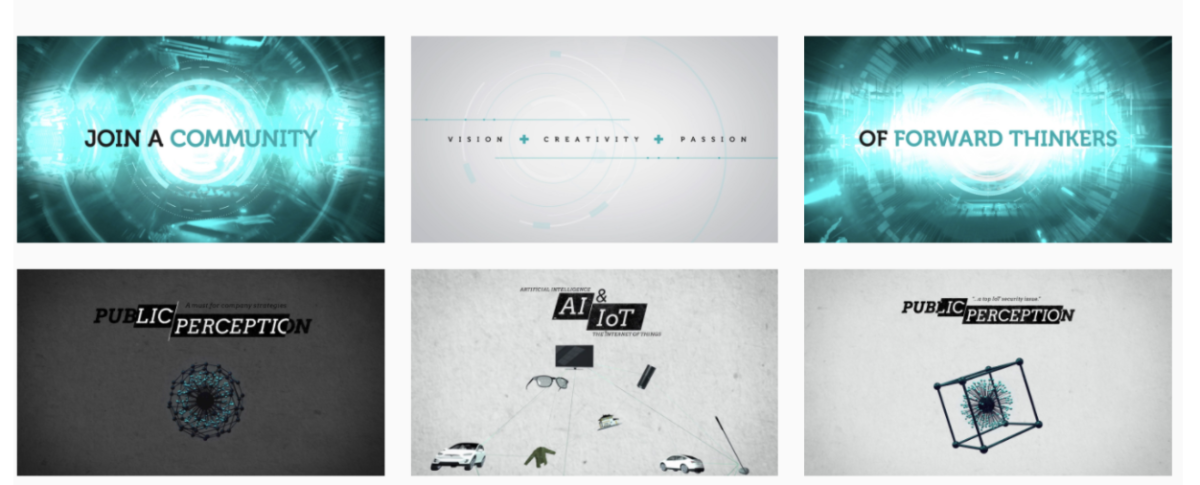
The Strategy:
As a result of this, Lenovo developed Tech Revolution, a digital content center. It aimed to educate individuals in the Asia-Pacific area on new technology, trends, and applications. They created a website, https://www.techrevolution.asia, on which they published stories and articles to enlighten their readers about the items they were promoting. Lenovo also worked with IT experts to produce tips on how technology is always evolving.
The Results:
- More than 500 articles have been published, resulting in 34 million page views.
- More than 250k people have clicked on the link.
- More than 60k social media interactions.
- More than one hundred thousand additional site visits.
Key Takeaway:
- When consumers buy a product or service, they want to know that they are interacting with the best in the business. And offering informative material is the best approach to reassure your target viewers.
- Your clients will be more likely to buy from you if they have more information to base their judgments on.
- Customers on the internet enjoy giving and receiving feedback. Incorporating user-generated content into your marketing strategy can help you save money while building customer loyalty.
- Customer testimonials, professional advise, and other educational guides that tout the benefits of your items are more credible.
Capgemini

The Strategy:
In the past, online marketing and brand campaign strategist Rena Patel has witnessed unsatisfactory outcomes from this sort of pricey marketing. Rena was well aware that the brand’s audience was disengaged and that the proposed plan would be rejected by its clients. They had no interest in golf and had no idea who the great golfers the executives intended to sponsor was. They didn’t even know their own names.
Instead, Rena devised a content marketing strategy that would let Capgemini connect with its target demographic on a far less budget than previously anticipated. She established a goal of attracting one million new visitors to her website, and she was willing to risk her reputation to achieve it.
As part of Capgemini’s content marketing strategy, Rena utilized a narrative website as the centerpiece of her approach. Customer concerns and problems were addressed on this site, including those relating to big data and the cloud.
The Results:
- After a year, the website has delivered over one million additional visits to the brand’s website, exceeding Rena’s initial target. More than 100,000 new LinkedIn followers and 1.8 million content shares were recruited as a result of the campaign. In its first year, the approach yielded sales of about $1 million, and in its second year, sales jumped to an astounding $5 million. Rena’s content marketing campaign currently generates an estimated $20 million in revenue each year.
Key Takeaway:
- Even if you have a large marketing budget, you still need to connect with your consumers. Start by figuring out what will resonate with your target audience (hint: content marketing). Then, focus your efforts on a plan that will help you get there.
The book Mean People Suck has further information about Rena’s content marketing approach for Capgemini.
College Raptor

The Strategy:
Students at College Raptor used a three-pronged content marketing approach. For starters, they created evergreen content on themes like “What is a good ACT score?” that their intended audience will always be interested in learning more about.
Second, they generated material that may not meet all of the SEO criteria, but which has a higher chance of going viral on social media and therefore increasing exposure and brand recognition.
As a final step, the College Raptor team created material aimed toward link building, which involves boosting the number of backlinks to a website or piece of content.
Over time, the College Raptor team produced a great deal of dynamic material, including infographics, which illustrates where every senator in the 114th Congress attended college. The Washington Post posted this one because it was so on point.
The Results:
- Over a million people visited College Raptor’s site in a year, averaging more than 100,000 organic sessions each month. Their innovative use of evergreen content, as well as highly shareable articles, aided in the company’s rapid expansion and helped build its name.
Key Takeaway:
- You may use your intended audience and other businesses to acquire awareness and improve traffic by creating highly shareable content.
Cleveland Clinic

The Strategy:
Empathy: The Human Connection to Patient Care was produced by the Cleveland Clinic’s in-house media production team and the Patient Experience division.
This film asks the question, “Would you treat someone differently if you could be in their shoes?” We were able to do this by telling the tales of a diverse group of individuals, including an 11-year-old girl seeing her dying father for the last time, a lady who had just gotten a dreadful diagnosis, and the family of a 19-year-old boy who was on life support.
It was meant for internal use exclusively, but the content marketing staff saw its potential worth in making it available to the general public. In addition to the Cleveland Clinic’s own blog, Health Essentials, they shared it through various social media networks.
The Results:
- After being posted on the site, the film went viral, making its way across the healthcare industry and beyond. Since then, it’s racked up over six million views alone on YouTube.
- Over the past year, the Health Essentials website has seen enormous growth, with over six million unique visitors each month. Among the many health-related concerns addressed by the site is “Is there truly a shattered heart?” as well as, “What do you think your urine’s color says about your character?”
Key Takeaway:
- Content marketing success requires understanding your market and their requirements, as demonstrated by the Cleveland Clinic blog. By now, the blog is bringing in enough money to cover the expenditures of content creation while also helping to further the brand’s objective of delivering top-notch care and education.
Blendtec
The Strategy:
Blendtec was willing to take a chance. They started a video series called “Will it Blend?” in which the company’s creator Tom Dickson blends non-edible objects that aren’t meant to be blended, such glowsticks, lighters, even iPhones, and iPads. An attempt at comedy was made with the series, which was deliberately bizarre in order to enliven a line of products that were otherwise very dull.
The “Will it Blend?” video series became an instant sensation, with more than 180 films produced over the course of its 12-year run.
The Results:
- Blendtec had a 700% rise in sales in its first 3 years as a result of the “Will it Blend?” series. Blendtec’s YouTube channel currently has over 860K subscribers, and the “Will it Blend?” series has carved out a niche for itself in pop culture, earning a spot in the Internet Movie Database.
Key Takeaway:
- When it comes to content planning, each type of business can use some imagination. A conventional sector or line of products is not an impediment to great content. Unique material might be risky, but when done right, it can pay off handsomely. That’s what the Blendtec tale shows us.
SAP

The Strategy:
To engage early-stage prospects with great material, I devised a radical new strategy and launched SAP’s first content marketing website, SAP Business Innovation. Once I had the business case built, the money identified, and the ROI demonstrated, I came up with what I now refer to as The Content Formula.
There was no material to fulfill non-product queries like “big data,” as I discovered after digging through online search results. SAP was losing out on these potential clients because it lacked the content to answer their queries at an early stage. As a result, the company’s case had been established.
In fact, the company was spending a large amount of money on advertising each year with disappointing results, so I decided to try a fresh content marketing strategy with no budget. Instead of using static landing pages, I recommended that the advertising department give up half of their money to fund the creation of a dynamic content advertising platform to substitute them.
The Results:
- This saved the marketing staff half their money for years to come and produced over 1000 leads, amounting to $750,000 in income and 7x ROI after publishing hundreds of articles on the platform.
Key Takeaway:
- SAP’s large budget, like that of Capgemini’s, could not fix their problem; first, they had to establish a relationship with their customer. Another thing to remember is that material about existing customers (such as SAP’s accounts of innovation) is extremely engaging and helps to create trust with potential consumers, which is crucial for converting them into paying customers.
Shutterstock Creative Trends
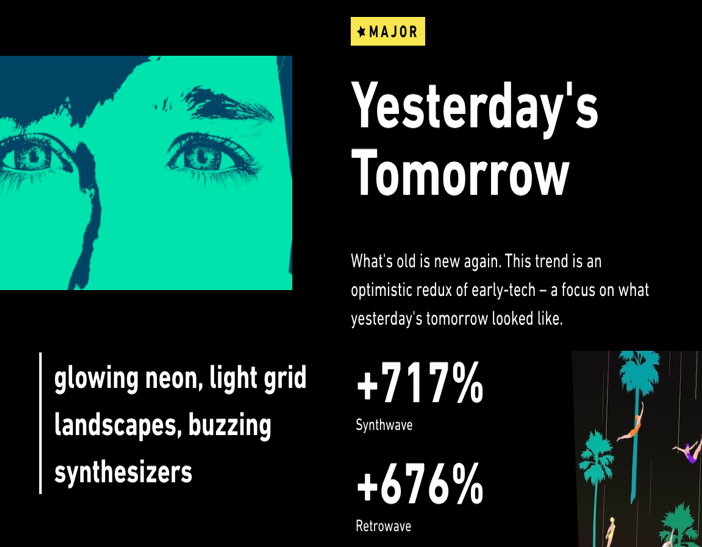
The Strategy:
To help companies, advertising agencies, and media outlets across the world, Shutterstock offers a wide range of high-quality, royalty-free images, vectors, drawings, videos, and audio.
Shutterstock’s annual Creative Trends report, now in its ninth year, is based on consumer downloads and searches from the previous year.
The study examines how trends in the image, video, and audio design will affect creative direction and aesthetics in the future. Each of Shutterstock’s two main audiences – companies that purchase the photos and visual artists who submit work for sale – may benefit from one single piece of material. It’s a wonderful illustration of how to research and in-house data can be used to generate content that consumers and members of the brand’s community like.
Shutterstock’s senior communications manager, Krystina Puleo, discusses the reaction to the announcement. It received over 170 publications and mentions in the first two weeks after its public release in 20 languages. In addition to Adweek and Campaign, these pieces appeared in Vogue Australia and Design Jungle as well as W&V and Adweek for creative, corporate, and marketing audiences. Shutterstock’s top creative team members who backed the project provided feedback for several of the pieces.
The Results:
- In the first two weeks after the infographic was published, it had over 160,000 page hits and 146,000 unique sessions. (As of now, this number has more than doubled.)
- This infographic had a 22% email open rate, and that resulted in direct income.
Key Takeaway:
- Make use of information that is currently at your disposal. Never be hesitant to disclose confidential information if it may provide your audience unique insights.
Coding Sans
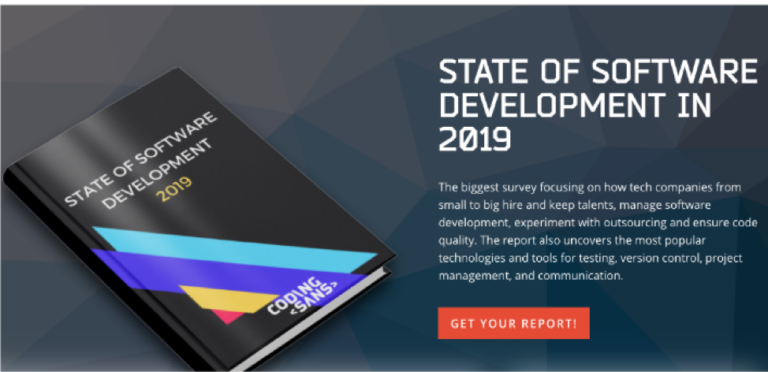
The Strategy:
Digital and cross-platform mobile app development is the focus of Coding Sans, a boutique software firm. The firm was looking for a solution to generate excellent engagement while also building trust online. The objective was to create high-quality content, obtain high-quality backlinks, and boost organic traffic and internet leads as a result of these actions.
The Coding Sans team realized that the best approach to fulfill the curiosity of its readers while also earning high-quality backlinks was to create excellent content. It started producing a report on the status of software development in 2017 for the first time (gated). Using data from an industry poll, this study, which has been released annually since 2009, examines software development trends and problems. Linking to and sharing the report is easy because of the report’s attractiveness to links and shares.
It takes a lot of work to compile such a report. Took 260 hours of labor in just over six weeks, says Coding Sans’ head of marketing Tamas Torok. The hard work was well worth it. Traffic to their website quadrupled the year it was originally published (2017) and has been stable since.
The Results:
- There were 26,700 people that visited their website organically..
- Within the first week, there were 600-700 downloads.
- More than 5,000 people have downloaded it.
- There are 291 backlinks to their page.
- The report’s indirect beneficial influence resulted in an estimated $400,000 in new project funding.
Key Takeaway:
- Spend time generating useful material for your audience.
Final Thoughts
Even if we as busy content marketers don’t have the time to map the entire genome of content brilliance to a dependable and repeatable science, we can all see the telltale indications of a real and effective storytelling effort that motivates consumers to take action. With any luck, these ideas will inspire you to keep pushing your own creativity further.
